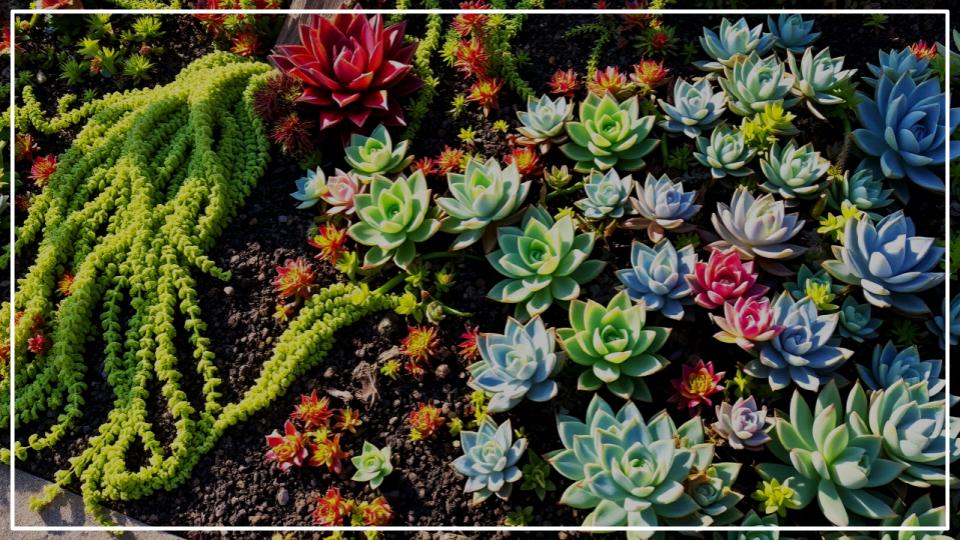
A truly magnificent garden often feels like a labor of love that takes years to mature. But what if you could achieve that lush, established look in a fraction of the time? The secret, my friends, lies in the remarkable world of fast-growing succulents. These gems of the plant kingdom offer the perfect blend of architectural beauty and vigorous growth, quickly transforming bare soil into a tapestry of color and texture. Forget waiting seasons for your garden to take shape; with the right selections, you can create a stunning, water-wise landscape that looks full and vibrant in mere months. This guide will walk you through my top ten choices for plants that deliver impressive results, fast.
Quick Tips for a Thriving Succulent Garden
Here are the essentials for getting started with fast-growing succulents:
- Sun is Paramount: Most fast-growing succulents need at least 6 hours of bright, direct sunlight to thrive and maintain their compact shape and vibrant color.
- Embrace Excellent Drainage: The number one rule for succulent health is to use soil that drains quickly. Amend garden beds with sand or perlite, and always use pots with drainage holes.
- Water Deeply, but Infrequently: Drench the soil completely when you water, but then allow it to dry out entirely before watering again. When in doubt, wait a few more days.
- Give Them Room: Fast growers need space to spread. Pay attention to their mature size when planting to avoid overcrowding down the line.
Why Every Smart Gardener Is Planting Fast-Growing Succulents
The appeal of succulents goes far beyond their well-known drought-tolerant plants status. When you select vigorous, spreading varieties, you unlock a host of benefits that solve common garden dilemmas with style and ease. They are nature’s problem-solvers, blanketing tricky slopes with living color, spilling beautifully from containers, and outcompeting weeds once established.
In my own garden, I’ve used trailing sedums to soften the hard edges of a stone wall, and it took just one season for them to create a graceful, cascading effect that would have taken years with other perennials. This rapid growth is not just about impatience; it’s about seeing your creative vision come to life sooner. These plants provide near-instant gratification, which is a wonderful and encouraging experience for both new and seasoned gardeners alike. Their ability to propagate from a single leaf or stem cutting also means you can multiply your collection for free, filling other areas of your garden with minimal effort and expense.
Our Top 10 Fast-Growing Succulents for a Lush Garden
Here are ten of my most trusted, vigorous, and beautiful succulents that are sure to fill your garden in no time.
1. Stonecrop (Sedum spp.)
No list of fast-growing succulents would be complete without celebrating the versatile Sedum genus. These are the workhorses of the succulent world. Spreading varieties like ‘Angelina’ and ‘Blue Spruce’ are exceptional ground cover succulents, forming dense mats of foliage that are brilliant for choking out weeds.
- Why it’s a winner: Sedum is incredibly forgiving and comes in a vast array of colors and textures, from the chartreuse glow of ‘Angelina’ to the silvery-blue hue of Sedum reflexum.
- My expert tip: Don’t be afraid to trim them back if they get leggy. A good “haircut” in the spring encourages bushier growth, and every cutting can be simply tucked into the soil to start a new plant. I do this every year to fill in any bare spots.
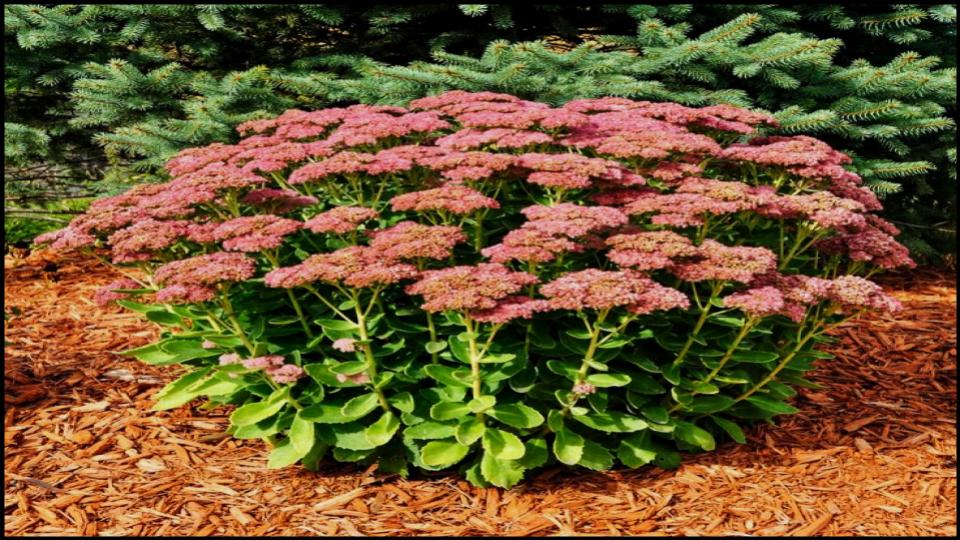
2. Ghost Plant (Graptopetalum paraguayense)
The Ghost Plant is beloved for its ethereal, powdery rosettes that shift in color from silvery-gray to pinkish-yellow depending on sun exposure. It grows with abandon, with stems that trail gracefully over the sides of pots or spread across the ground.
- Why it’s a winner: It’s one of the easiest succulents to propagate. Dropped leaves will often sprout into new plants right where they fall.
- My expert tip: A common mistake I see is planting Ghost Plants in too much shade. For those beautiful pastel stress colors, you must provide plenty of direct sun. The more sun, the more compact and colorful the rosettes will be.
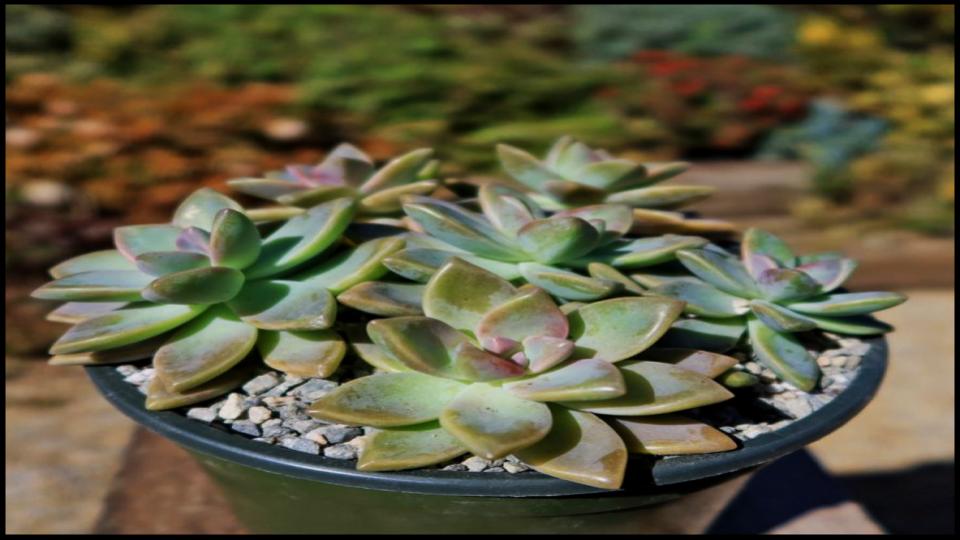
3. Hens and Chicks (Sempervivum tectorum)
A classic for a reason, Sempervivum forms a tight, quilted mat of rosettes. The main “hen” rosette sends out numerous smaller “chicks” on runners, which quickly take root and form a dense colony.
- Why it’s a winner: They are incredibly cold-hardy, making them a perfect choice for gardeners in cooler climates who want a fast-spreading succulent that can survive the winter. According to the Clemson Cooperative Extension Home & Garden Information Center, they require very little care once established.
- My expert tip: To encourage faster spreading, you can detach the “chicks” once they’ve formed a few of their own roots and replant them a few inches away.
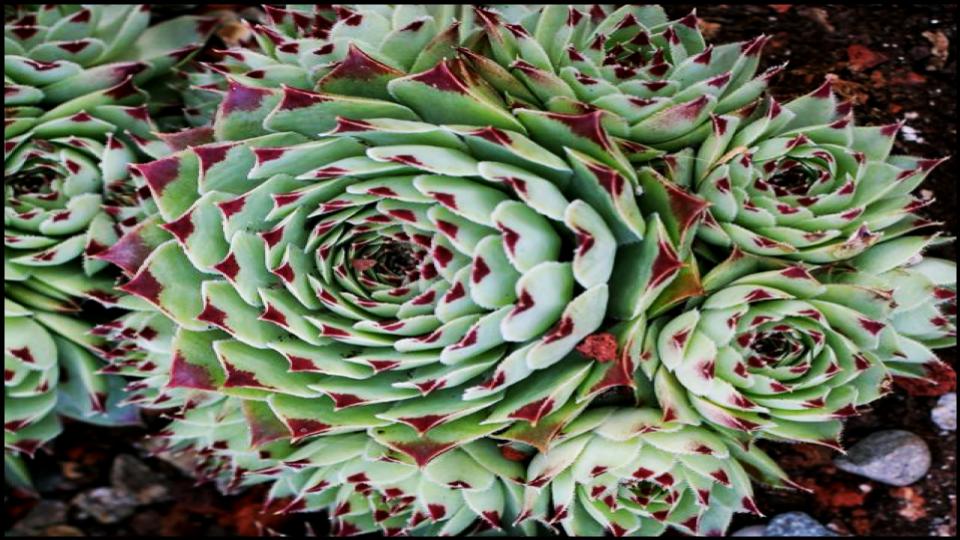
4. Ice Plant (Delosperma cooperi)
If you’re looking for flowering power, look no further. The hardy Ice Plant produces a dazzling blanket of neon-pink, daisy-like flowers that bloom for months. It spreads quickly to form a thick, weed-suppressing mat.
- Why it’s a winner: It thrives in poor, sandy soil where other plants might struggle, making it ideal for rock gardens, slopes, or roadside strips.
- My expert tip: While it’s very drought-tolerant, giving it a bit more water during its peak blooming season will result in an even more spectacular floral display.
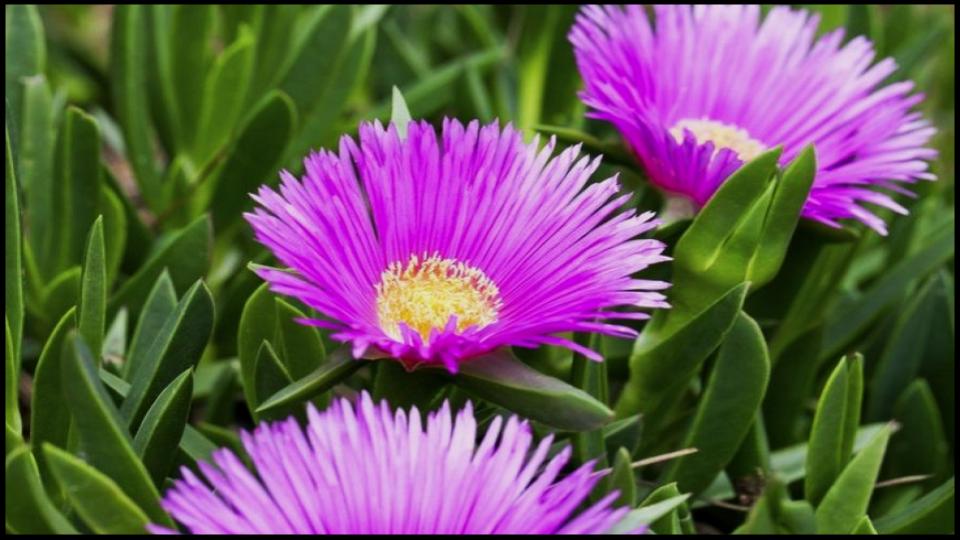
5. String of Bananas (Senecio radicans)
For hanging baskets and containers, nothing beats the rapid growth of a String of Bananas. Its long, trailing stems adorned with banana-shaped leaves can grow several feet in a single season, creating a stunning cascading effect.
- Why it’s a winner: It’s faster and often less fussy than its popular cousin, the String of Pearls.
- My expert tip: If the top of the plant looks sparse, simply coil a few of the strands back onto the soil surface in the pot. They will root into the soil, creating a much fuller look.
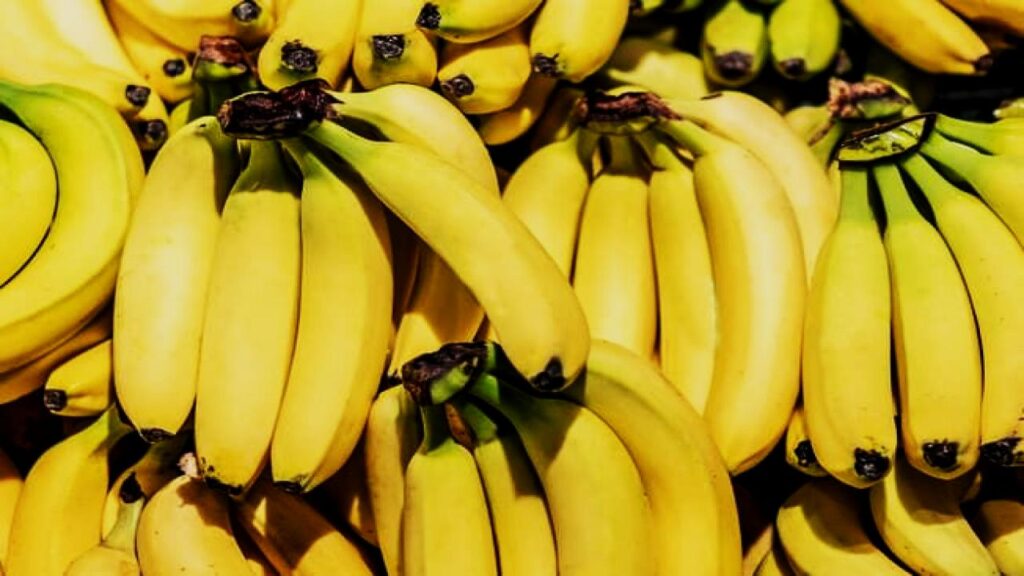
6. Coppertone Stonecrop (Sedum nussbaumerianum)
This is a succulent that truly lives up to its name. With enough sunlight, the leaves of this easy-growing Sedum turn a brilliant coppery-orange. It has a branching habit and will quickly fill a pot or a sunny patch in the garden.
- Why it’s a winner: The color is simply spectacular. It provides a warm, vibrant contrast to the cooler blue and silver tones of other succulents.
- My expert tip: This is my go-to for a “spiller” in container arrangements. It plays beautifully against purple Echeverias or blue-gray Agaves.
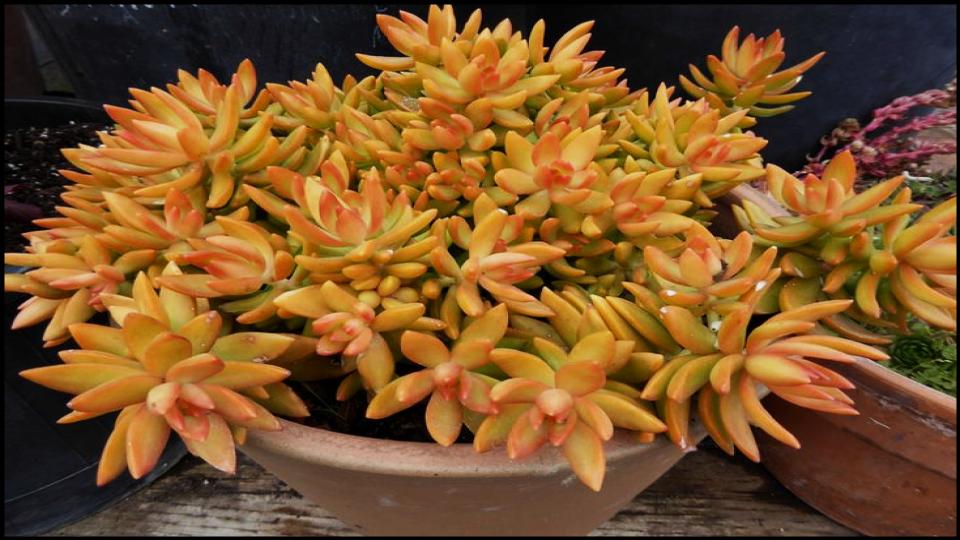
7. Crassula ‘Tricolor’ (Crassula pellucida variegata)
A stunning, low-growing creeper, the ‘Tricolor’ Jade Vine forms a mat of heart-shaped leaves variegated with green, cream, and vibrant pink edges. It’s a fast and beautiful filler for the base of larger succulent arrangements.
- Why it’s a winner: It provides multi-toned color in a compact, spreading form. It’s fantastic for adding a pop of color to dish gardens.
- My expert tip: It appreciates a little more water and slightly less intense sun than desert succulents. A spot with bright, indirect light or morning sun is perfect.
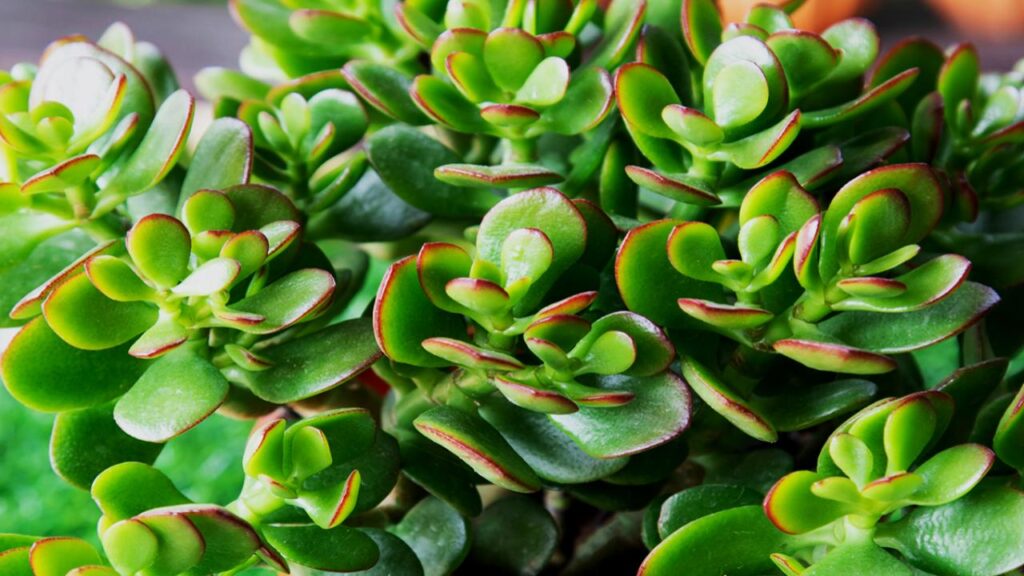
8. Dragon’s Blood Sedum (Sedum spurium ‘Dragon’s Blood’)
Another incredible ground cover, ‘Dragon’s Blood’ is famous for its deep red foliage that intensifies in the fall. It’s a vigorous spreader that will quickly carpet an area, adorned with pinkish-red flowers in late summer.
- Why it’s a winner: It offers dramatic, year-round color and is exceptionally tough and reliable, even in zones with cold winters.
- My expert tip: Plant it on a slope or in a rock garden where it can truly cascade. The visual impact of that river of red is one of my favorite succulent garden ideas.
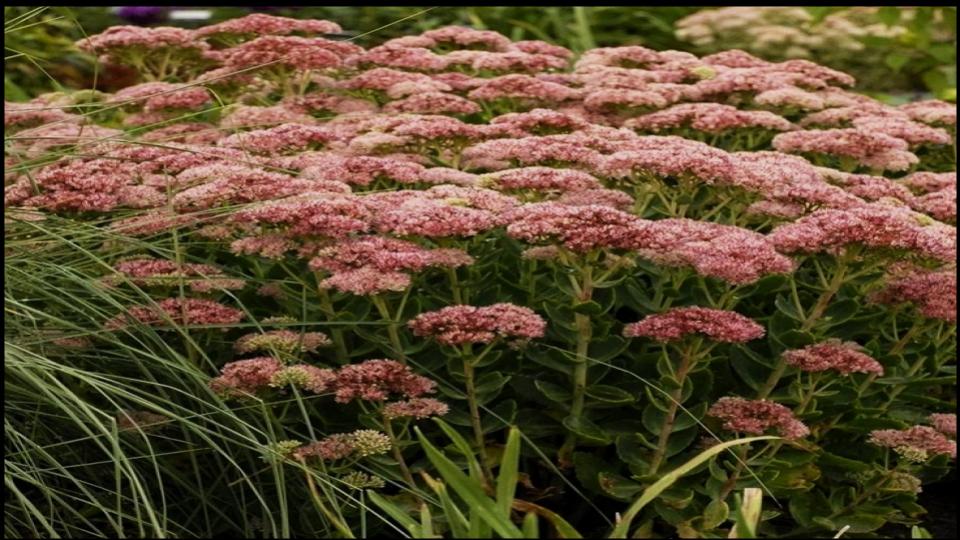
9. Blue Chalksticks (Senecio serpens)
For a completely different texture and color, Blue Chalksticks is a must-have. This plant spreads via underground runners, sending up masses of vertical, finger-like leaves in a striking powdery blue.
- Why it’s a winner: The cool blue color and unique vertical texture provide a fantastic design contrast to mounding or rosette-shaped succulents. The University of Wisconsin-Madison Horticulture Division of Extension notes its value in creating textural diversity.
- My expert tip: It can get aggressive in ideal conditions. Don’t be afraid to pull it out where you don’t want it—it’s very easy to manage and the pulled stems can be replanted elsewhere.
10. Jellybean Plant (Sedum rubrotinctum)
A cheerful and charming plant, the Jellybean plant has chubby little leaves that look just like the candy. The tips of the leaves turn a brilliant red in the sun. Stems and dropped leaves root very easily, allowing it to fill a pot or patch of ground with surprising speed.
- Why it’s a winner: It’s fun, whimsical, and incredibly easy to propagate, making it a favorite for sharing with friends or for children’s gardening projects.
- My expert tip: This plant is a great indicator of sunlight levels. If the leaves are pure green, it needs more direct sun to develop those beautiful red tips.
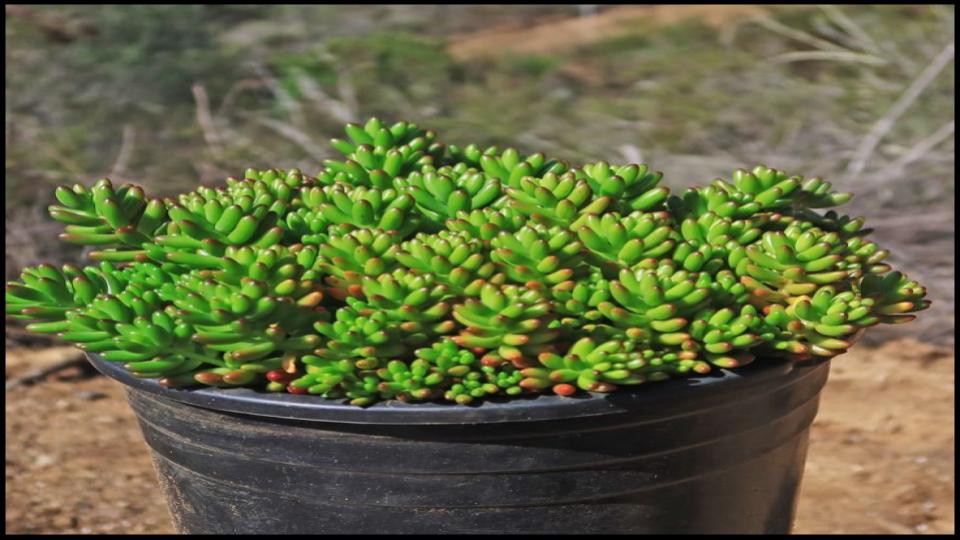
Styling Your Fast-Growing Succulents
Now that you have your plants, it’s time for the fun part. Think beyond just planting them in a row.
- Create a Living Carpet: Use spreading ground covers like ‘Dragon’s Blood’ Sedum or Ice Plant to create a dense, colorful carpet in a hot, dry area where grass won’t grow.
- Spillers, Fillers, and Thrillers: This classic container design rule is perfect for succulents. Use an upright plant like an Agave as the “thriller,” fill in around it with rosette-forming Echeverias or Ghost Plants, and let a “spiller” like String of Bananas or Coppertone Stonecrop cascade over the edge.
- Tuck into Rock Walls: Allow trailing succulents to root in the crevices of stone retaining walls. This softens the look of the hardscape and creates a very natural, established appearance.
A Final Word of Encouragement
Choosing fast-growing succulents is one of the most rewarding decisions you can make for your garden. It’s about creating immediate impact and building a landscape that is as resilient as it is beautiful. You’ll be amazed at how quickly these tenacious plants will settle in, spread out, and transform a patch of soil into a living work of art.
So go ahead, pick a few favorites from this list and give them a sunny spot to call home. In just a short time, you’ll have a lush, thriving garden that looks like it’s been there for years—and you’ll have the satisfaction of knowing you choose wisely.
Read More
How to Keep Your Geraniums Blooming Nonstop Through the Hottest Months
